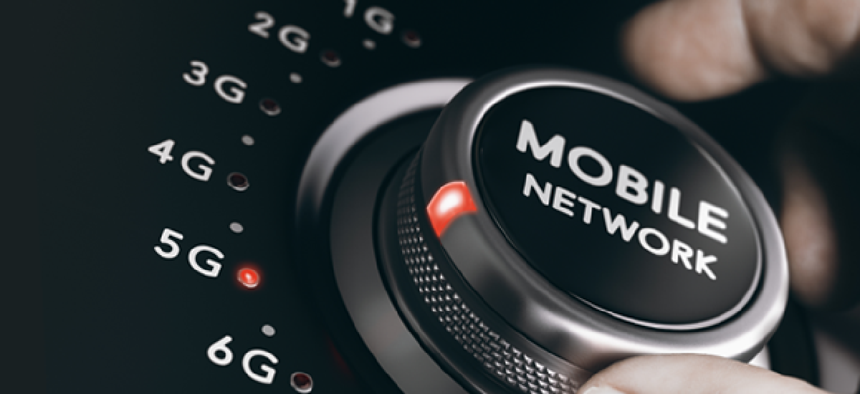5G: Cheers and cautions


Connecting state and local government leaders
As 5G starts to roll out, cities are laying the groundwork to take advantage of the technology. But not everyone is a fan.
In Indianapolis, one of a handful of cities with 5G capabilities offered by AT&T and Verizon, industry, academic, government state and national leaders met at the Indy 5G Summit to highlight the opportunities it represents and build alliances to ensure the city and state can play a leading role in this emerging technology.
Rep. Susan W. Brooks (R-Ind.) led a discussion of the E-FRONTIER Act, a bill she co-sponsored to prevent the federal government from managing the construction of a nationwide 5G network and instead rely on the expertise of the private sector to lead the expansion.
"There is tremendous potential in 5G technology in both advancing internet speeds and in creating millions of new jobs and maintain our country's global leadership," Brooks said. "It's important that this technology stays in the private sector where all can benefit from its potential."
The group also discussed the creation of an Indy 5G Zone -- a testbed for companies to pilot 5G-enabled applications, summit organizers said.
“The full potential promised by 5G: higher speed, faster response and edge intelligence, can only be realized when the whole ecosystem of innovation brings ‘killer apps’ to the growing infrastructure. The Indy 5G Zone will help accelerate such innovations.” Mung Chiang, Purdue University’s John A. Edwardson Dean of the College of Engineering “The AT&T and Verizon deployment of 5G in Indianapolis is a key step, enabling companies large and small to come here and test their 5G-enabled products. In wireless and in cars, Indy is speedy.”
In fact, Team Penske, the winner of the Indy 500, used 5G to stream and analyze high-quality video of its drivers on the track during practice. With that real-time feed, the team was able to better analyze a driver’s performance on specific turns make immediate changes while a car was on track.
"Prior to 5G, we’d capture video of a six- to seven-hour practice session, store it in on a memory card, then go back to the garage and analyze that information after practice,” team Engineer Carlos Gutierrez told SportTechie. “The faster this data gets to the team, the faster we can help the driver on the next lap and gain a competitive edge.”
“Before, spotters had to rely on a pair of binoculars, or delayed video feeds. With 5G, we’re giving them access to information they never had before so they can warn the driver of an accident ahead or who’s coming up behind them,” said Alex Smith, a member of Verizon’s technical staff.
Not all users have the resources of a professional racing team, and that's what concerns Federal Communications Commissioner Jessica Rosenworcel.
In a June 10 op-ed in Wired, "Choosing the Wrong Lane in the Race to 5G," Rosenworcel suggested that by basing our 5G wireless service on high-band spectrum, rather than mid-band, the U.S. will widen the digital divide, especially for rural users.
High-band 5G offers greater speed and capacity, but the millimeter wave signals it's based on are much more limited in range than mid-band spectrum offerings, sometimes "not traveling more than 350 feet, even when there are no major obstructions," she said. The signals also have difficulty penetrating walls and windows, which means "antenna facilities needed make this service viable makes it too costly to deploy in rural areas," she said.
Besides leaving rural Americans behind, Rosenworcel said the fact that the U.S. has made no mid-band spectrum available at auction for 5G applications, "we miss the benefits of scale and face higher costs and interoperability challenges" in addition to security challenges as other nations develop more mid-band technologies.
She advocated continued research and development in the mid-band spectrum. "For the United States to have secure 5G service available to everyone, everywhere, we need to stop going at it alone with millimeter wave spectrum," she said. "We need to make it a priority to auction mid-band airwaves right now. The longer we wait, the further behind the United States will fall -- and the less likely our rural communities will see the benefits of next generation of wireless technology."





